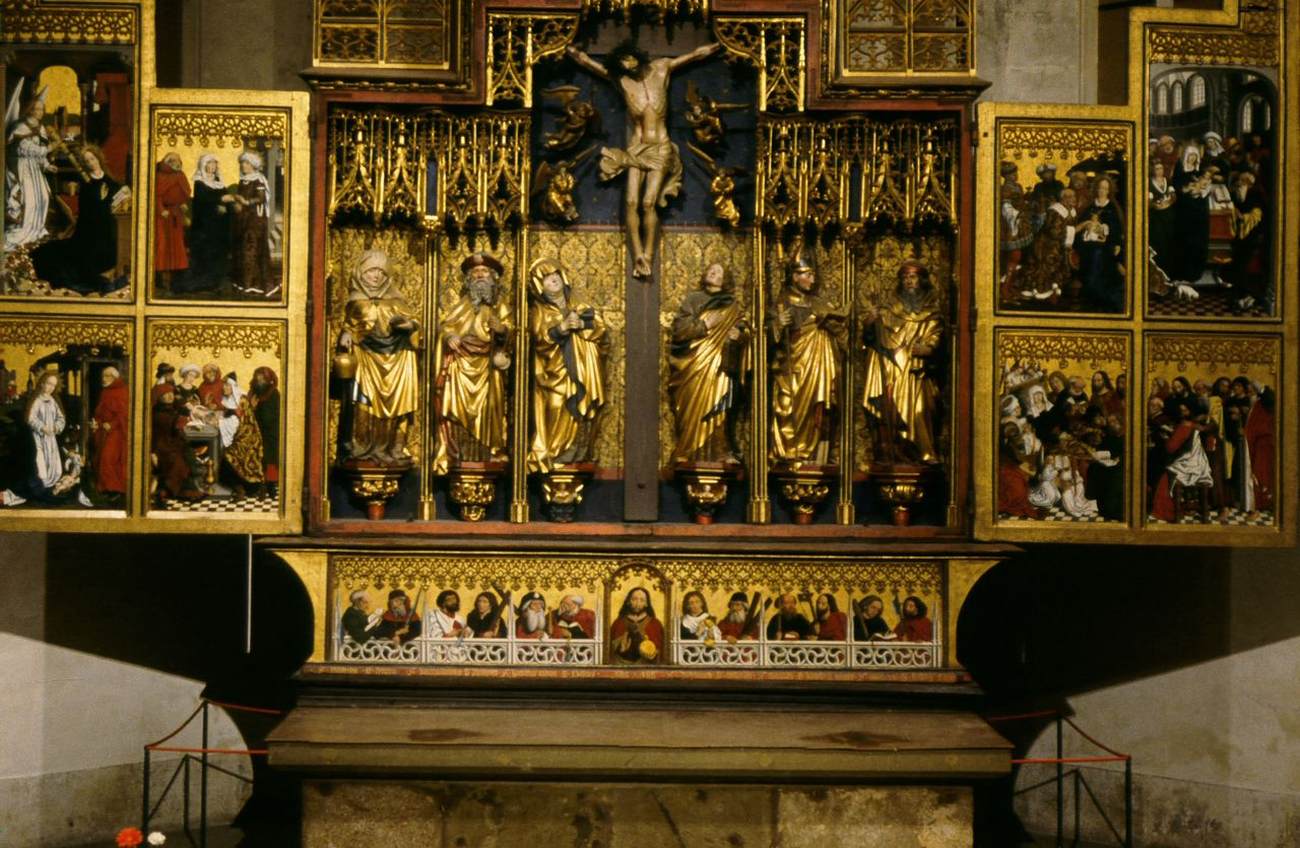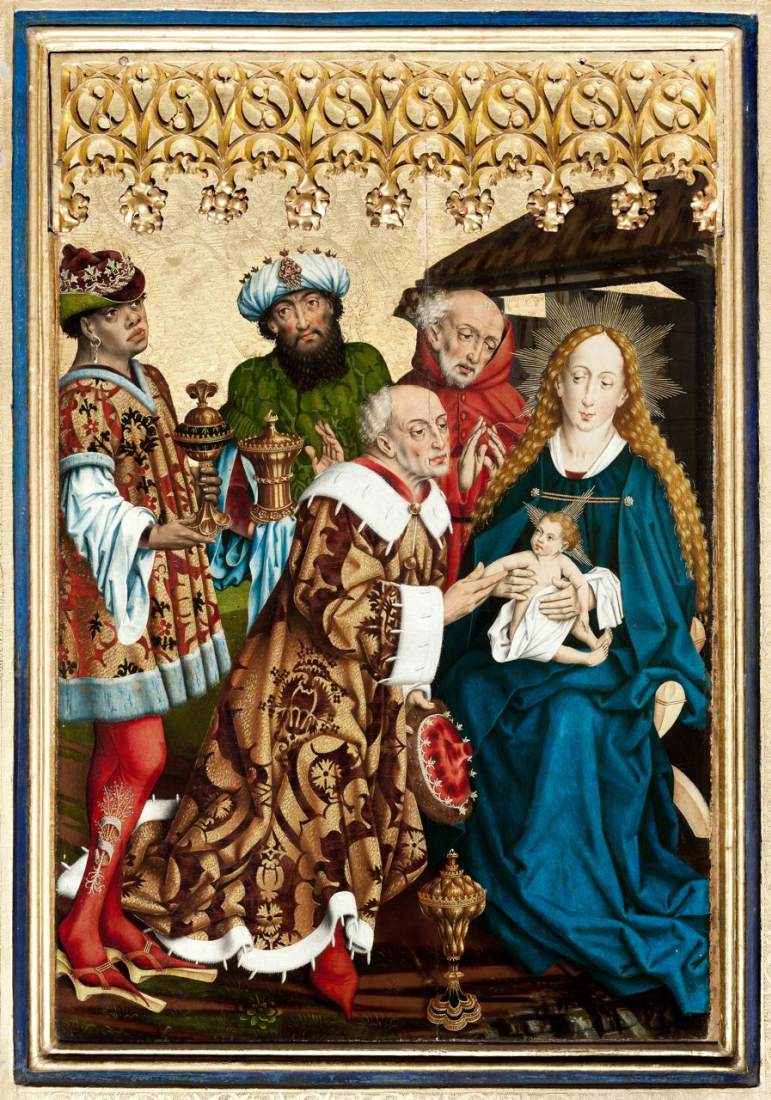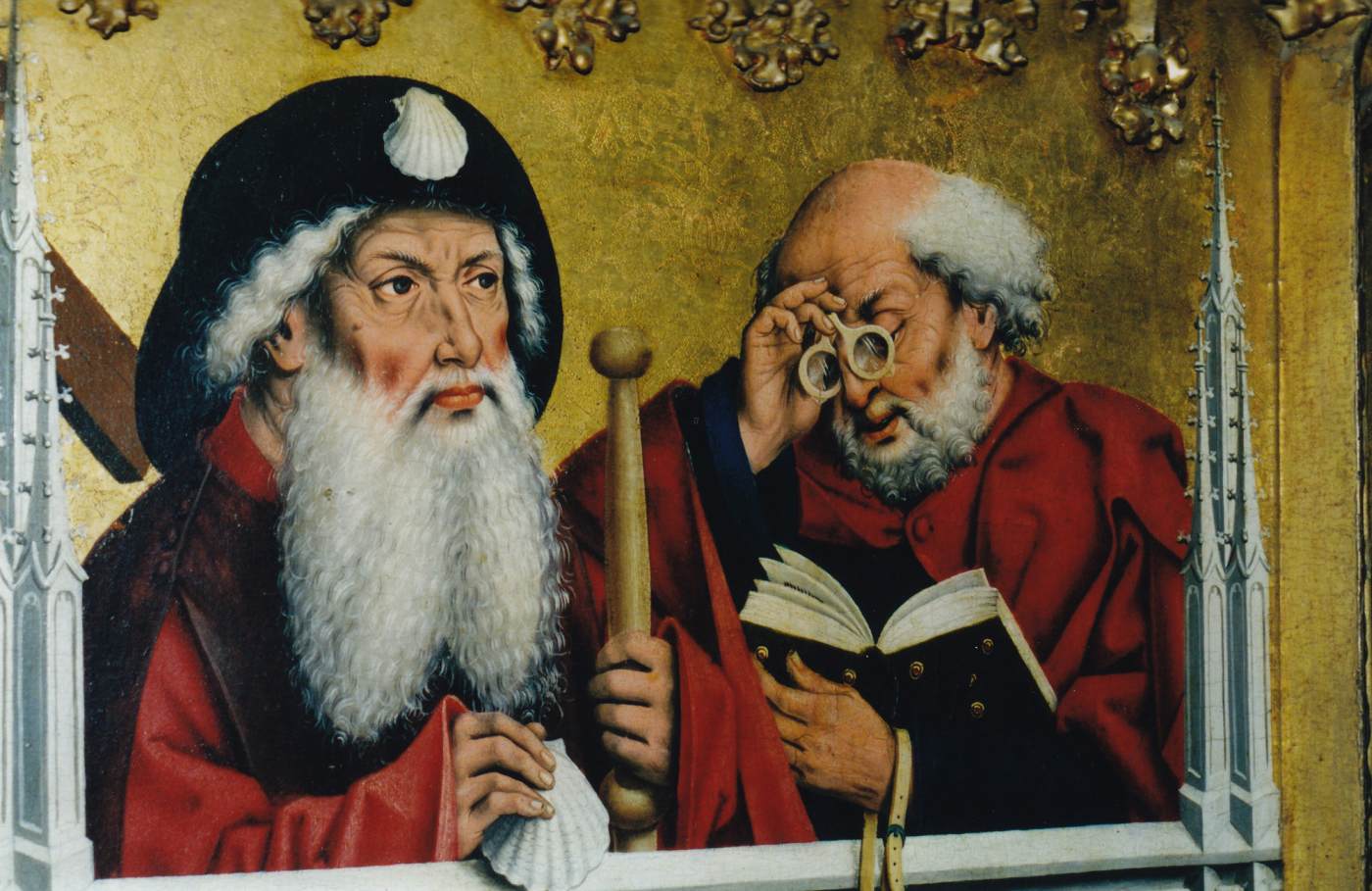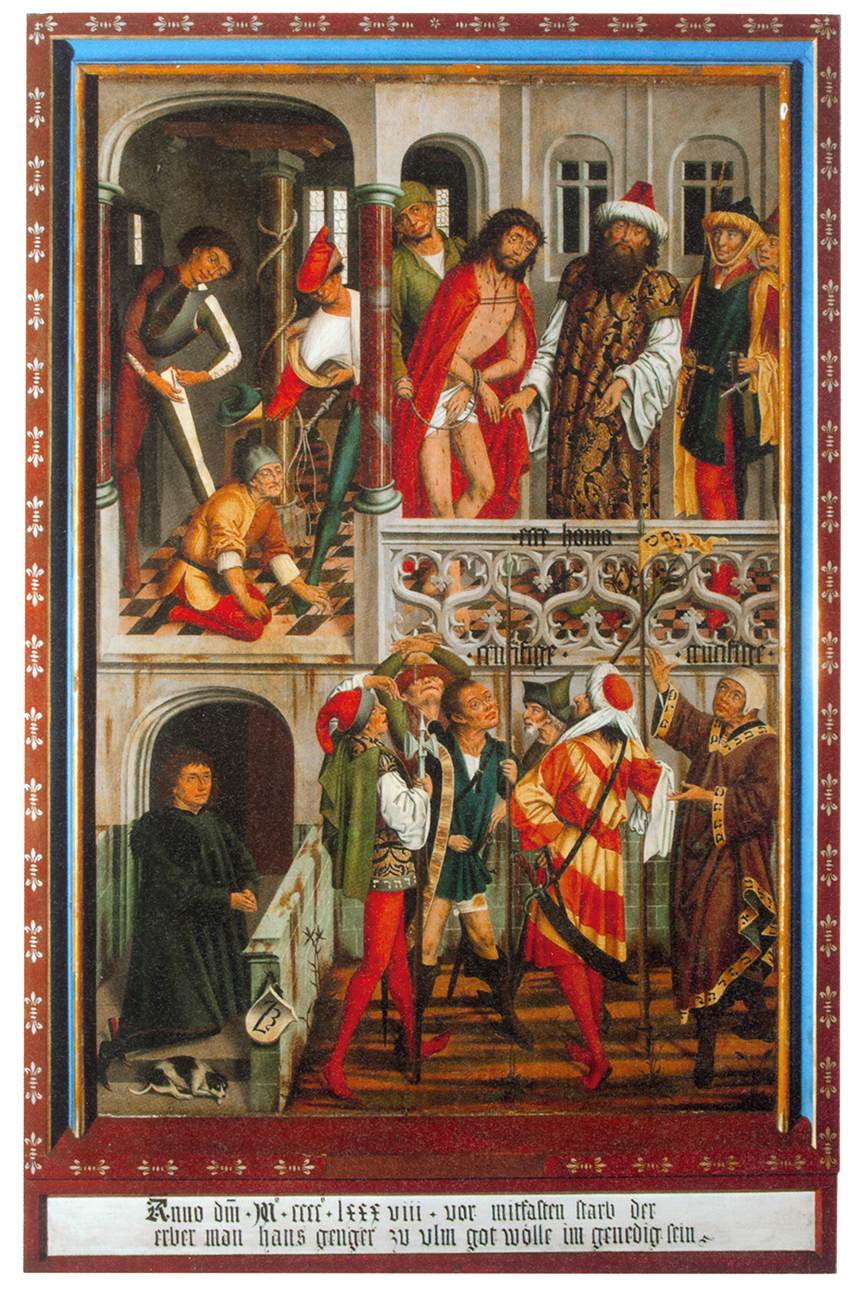Friedrich Herlin (also known as Hirlein or Herlein), German painter and contractor of altarpieces, active in Nördlingen (Swabia). He was the principal follower of Netherlandish ideas in south-west Germany. His life is richly documented in written sources.
Born in Rothenburg ob der Tauber, Bavaria, he soon achieved a supra-regional importance; when he became a citizen of Nördlingen in 1467, the city conceded him freedom from taxes for several years. The Familienaltar (family altar) shows Herlin with nine children; two of his sons took up the profession of their father, and a daughter married the painter Bartholomäus Zeitblom (c. 1455-c. 1520) of Ulm.
His earliest surviving work, two wings from an altarpiece with scenes from the Life of the Virgin (Bayerisches Nationalmuseum, Munich; Stadtmuseum, Nördlingen), is dated 1459. Eight panel paintings dated 1459, probably from cloister Kaishem (Kunsthalle, Karlsruhe) is also attributed to him.
In three signed and dated altars in Nördlingen (1462, St. Georg), Rothenburg (1466, St. Jakob), and Bopfingen (1472, Stadtkirche St. Blasius), Herlin combines painted panels, characterized by warm, saturated colours and naive realism, testifying of the influence of Rogier van der Weyden, with cycles of wooden shrine figures. A fourth altar commission, from 1471, is known only through documents, while the epitaph for the Müller family, which represents a crucifixion, names Herlin in the inscription (1463, Stadtmuseum, Nördlingen).
Some painted epitaphs are attributed to the painter as autograph works: the Fergen epitaph, dated 1467, represents an enthroned Madonna (St. Jakob, Rothenburg), and the Genger epitaph, dated 1468, portrays the Ecce Homo (Stadtmuseum, Nördlingen).
The painter's long-term association with the joiner Hans Waidenlich allows recent scholarship to recognize in Herlin an early example of a painter-entrepreneur active across regional borders. While Herlin and Waidenlich worked together on numerous important, large-scale commissions, other artists - such as Nicolaus Gerhaert (active 1462, died 1473) and Simon Lainberger (active from 1478, died 1503) - were hired to execute the wooden figural sculpture of the altar shrines.
//
![]()









